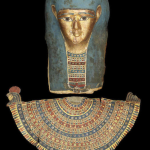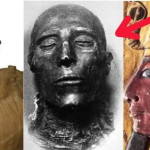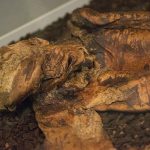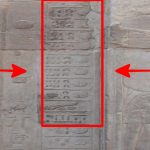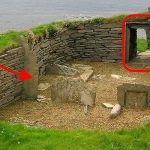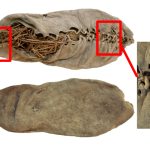Deciphering the Character and Origins of the Green Man
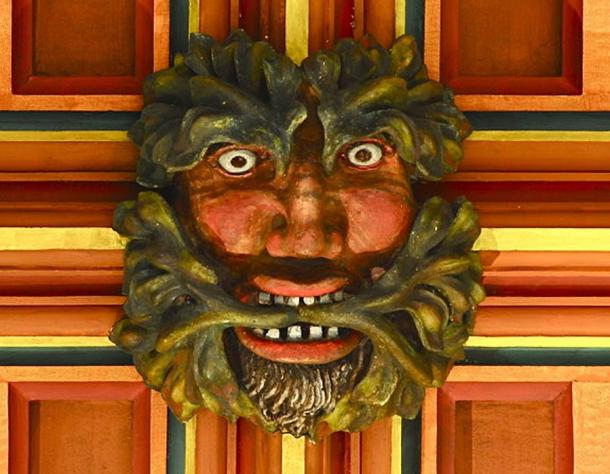
enigma spanning thousands of years, the Green Man is a symbol of mysterious origin and history. Permeating various religious faiths and cultures, the Green Man has survived countless transformations and cultural diversities, enduring in the same relative physical form to this day. Although specifics about his beginnings and his worship are not fully known, due in large part to how far back and to what initial cultures he can be traced to, it is a testament to the widespread reach of his character that he is still remembered and worshipped to this day.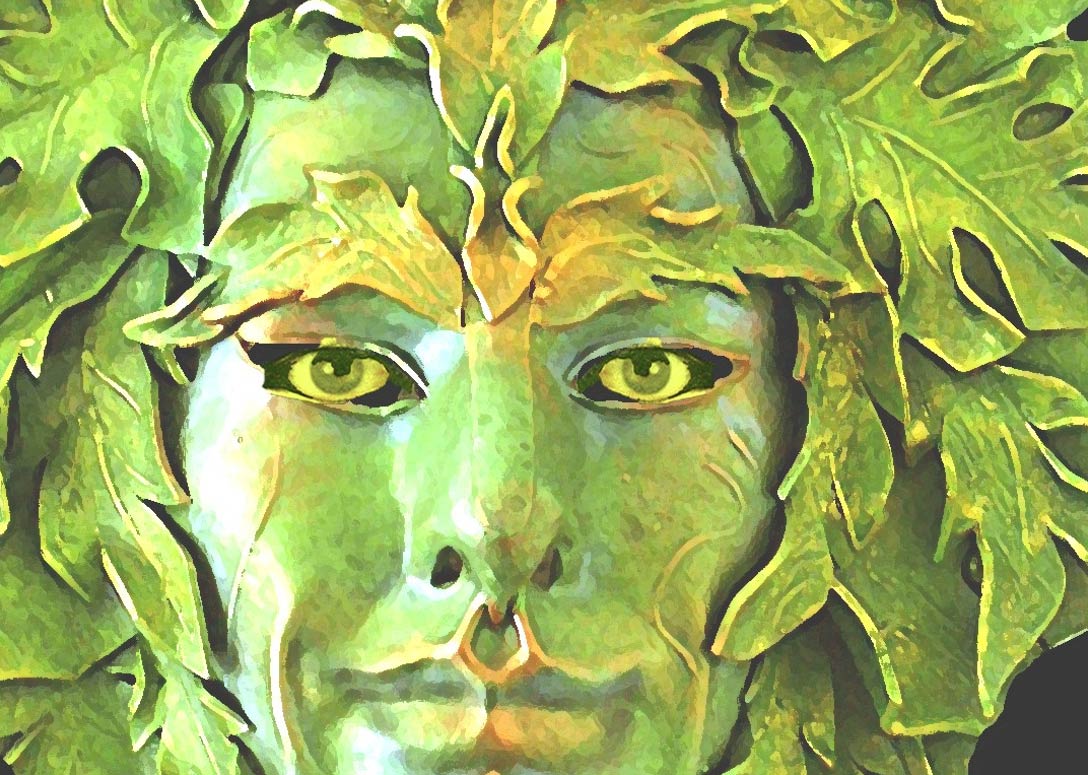
The Green Man is most highly believed to have begun as a pre-Christian entity, a spirit of nature personified as a man. His earliest images have been dated long before the coming of the Christian religion, depictions dating back before the days of the Roman Empire. However, it is with the coming of the empire that his images are noted as spanning religions, as he has been found both within the empire and at its borders, and then similar versions in other far reaching cultures such as India. Despite the range in locations of artifacts of the Green Man, he is most often associated with the society of the Celts, sequestered particularly in today’s Britain and France, because of the high number of images found in these regions and the stylized way in which he has been portrayed.
The Green Man is almost frequently depicted as a man’s face, usually ranging from middle aged to elderly, appearing out of the wild of forest trappings. His face is always encompassed by leaves, vines, and flowers, seeming to be literally born from the natural world. However, the slight variations on his images come from the exact way in which the natural world explodes around him. It is common for the Green Man to merely be surrounded by the greenery, hence the name ‘The Green Man’, but there have been archaeological finds of images in which the leaves and vines emanate from his mouth, ears, and other facial orifices, as well as depictions of his face made up completely of nature—facial lines carefully crafted as vines with his skin the very leaves themselves.

Green Man below crossing at Rochester Cathedral. (Wikimedia Commons)
Because of these depictions, the Green Man is believed to have been intended as a symbol of growth and rebirth, the eternal seasonal cycle of the coming of spring and the life of Man. This association stems from the pre-Christian notion that Man was born from nature, as evidenced by various mythological accounts of the way in which the world began, and the idea that Man is directly tied to the fate of nature. It is the natural changing of seasons that presents the passage of time that ages Man, thus by depicting the Green Man in such a way that overwhelmingly illustrates Man’s relationship with nature highlights the idea to worshippers that one cannot survive without the other. This union with nature and mutual reliance upon one another is evidenced historically and archaeologically through Man’s cultivation and development of the natural world, and the fruits nature thereby provided. Man was predominately reliant on nature until recent centuries, so the Green Man as an expression of this close of a relationship also seems likely and a fairly powerful message.

The “Green Man” of the Rosslyn Chapel is depicted with vines coming out of his mouth and surrounded by foliage. Credit: Visit Scotland
Along with rebirth and reliance, there is one more powerful affiliation the images of the Green Man undoubtedly indicate. With the cycles of the year comes the end of the year; with the cycles of life comes the end of life; and with the excessive use of nature comes the eventual, end of nature. The Green Man’s other important, powerful affiliation, then, is that of death and of endings. A fair amount of images of the Green Man have been found on graves, his face an empty skull rather than flourishing man, once again made out of or exploding with greenery. Though there is no physical face, archaeologists and art historians have expressed widespread belief that this is another mask of the Green Man, linked—as stated above—by the logical cycle of Man. What makes the Green Man green, after all, is the signs of nature that espouse from him—whether it is coming out of his face or designing his face. Thereby these skull and cross-bone depictions can logically be linked to this pre-Christian entity.
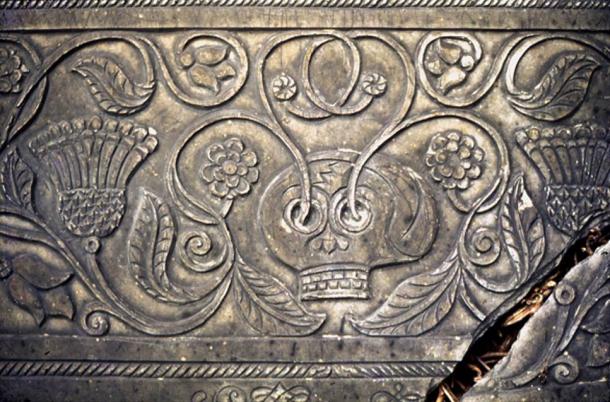
Elaborately carved grave slab at Shebbear (Devon, England) showing a skull sprouting flowering shoots (public domain)
The symbol of the Green Man can be summarized in the three R’s—rebirth, reliance, and ruin. Archaeological records link the Green Man to these three notions most evidently because of the three most important moments of time they represent, whether it is the life and death of nature, man, or the two affecting one another. It should be understood that much of what is known about the Green Man is speculation, as mythological records are not utilized as hard evidence but rather as examples of the belief system of pre-existing cultures; nevertheless, these speculations are highly likely.

